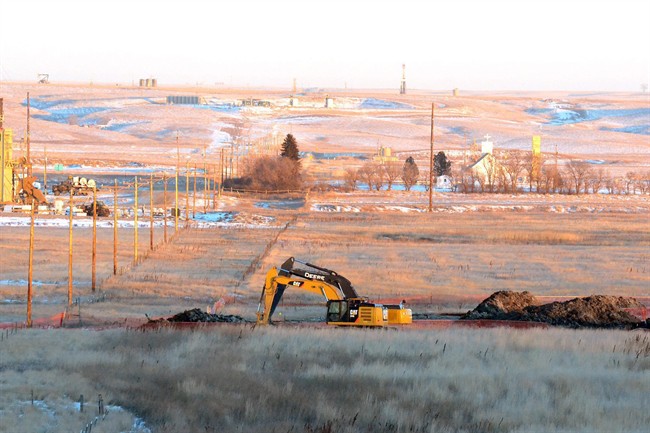Cleanup is underway after nearly 3 million gallons of brine, a
salty, toxic byproduct of oil and natural gas production, leaked
from a pipeline in western North Dakota, the largest spill of its
kind in the state since the current energy boom began.
The full environmental impact of the spill, which contaminated
two creeks, might not be clear for months. Some previous saltwater
spills have taken years to clean up. A contractor hired by the
pipeline operator will be on site Thursday, assessing the damage.
Operator Summit Midstream Partners LLC detected the pipeline
spill on Jan. 6, about 15 miles north of Williston and informed
North Dakota officials then. State health officials on Wednesday
said they weren’t given a full account of the size until Tuesday.
Inspectors have been monitoring the area near Williston, in the
heart of North Dakota’s oil country, but it will be difficult to
assess the effects of the spill until the ice melts, said Dave
Glatt, chief of the North Dakota Department of Health’s
environmental health section.
“This is not something we want to happen in North Dakota,”
Glatt said.
The spill presently doesn’t threaten public drinking water or
human health, Glatt said. He said a handful of farmers have been
asked to keep their livestock away from the two creeks, the smaller
of which will be drained.
Brine, also referred to as saltwater, is an unwanted byproduct of
drilling that is much saltier than sea water and may also contain
petroleum and residue from hydraulic fracturing operations.
The new spill is almost three times larger than one that fouled a
portion of the Fort Berthold Indian Reservation in July. Another
million-gallon saltwater spill in 2006, near Alexander, is still
being cleaned up nearly a decade later.
Summit Midstream said in a statement Wednesday that about 65,000
barrels of a mix of freshwater and brine have been pumped out from
Blacktail Creek. Brine also reached the bigger Little Muddy Creek
and potentially the Missouri River.
Glatt said the Blacktail Creek will be completely drained as part
of the initial cleanup, but the water and soil will have to be
continuously tested until after the spring thaw because some of the
contaminated water has frozen. The Little Muddy Creek will not be
drained because it is bigger than the Blacktail Creek and the
saltwater is being diluted.
“We will be monitoring to see how quickly it gets back to
natural background water quality conditions, and we are already
starting to see that,” Glatt said of the Little Muddy Creek. “It’s
getting back pretty quickly.”
Summit Midstream’s chief operating officer, Rene Casadaban, said
in a statement that the company’s “full and undivided attention”
is focused on cleaning up the spill and repairing any environmental
damage.
Spokesman Jonathan Morgan did not immediately confirm exactly
when the spill began. It also was not clear what caused the pipeline
to rupture. Glatt said the company has found the damaged portion of
pipeline and it was sent to a laboratory to determine what caused
the hole.
North Dakota has suffered scores of saltwater spills since the
state’s oil boom began in earnest in 2006.
A network of saltwater pipelines extends to hundreds of disposal
wells in the western part of the state, where the briny water is
pumped underground for permanent storage. Legislation to mandate
flow meters and cutoff switches on saltwater pipelines was
overwhelmingly rejected in the Legislature in 2013.
Wayde Schafer, a North Dakota spokesman for the Sierra Club,
called the brine “a real toxic mix” and “an extreme threat to the
environment and people’s health.”
“Technology exists to prevent these spills and nothing is being
done,” said Schafer. “Better pipelines, flow meters, cutoff
switches, more inspectors – something has got to be done.”
Daryl Peterson, a grain farmer from Mohall who has had spills on
his property, said the latest incident underscores the need for
tougher regulation and enforcement.
“Until we start holding companies fully accountable with
penalties, I don’t think we’re going to change this whole situation
we have in North Dakota,” said Peterson, a board member of the
Northwest Landowners Association.
—
Associated Press writers James MacPherson in Bismarck, North
Dakota, and John Flesher in Traverse City, Michigan, contributed to
this report.


Comments